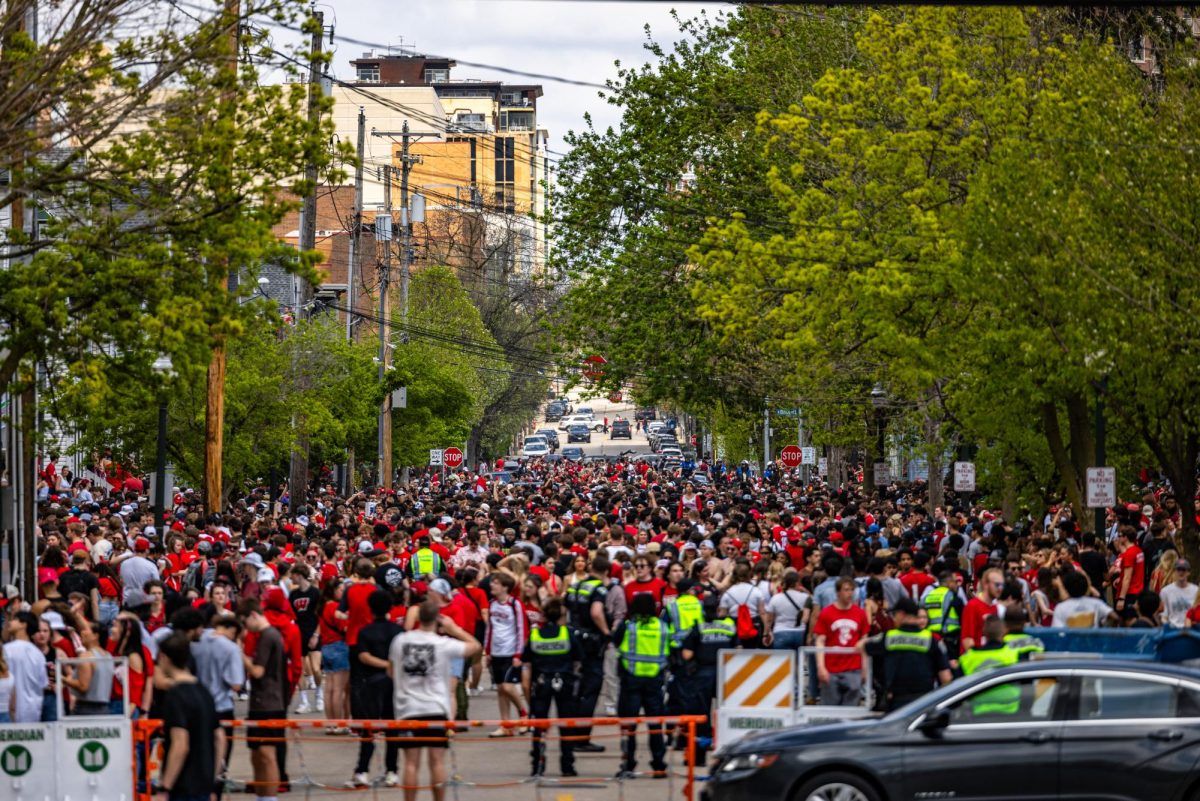While Che Guevara’s cult of personality has grown into a highly recognized global brand for yuppies and well-off college kids, director Walter Salles’ (“Central Station”) latest film “The Motorcycle Diaries” finds a pre-revolutionary Guevara (Gael Garcia Bernal, “Y Tu Mama Tambien”) traveling through South America by way of motorcycle, raft, boat and at many times foot with his best friend, Alberto Granada (Rodrigo De la Serna, “Gallito Ciego”) a fast-talking, girl-hungry biochemist.
At 23 years old, Ernesto Guevara has yet to adopt the nickname Che and is studying to become a doctor in Argentina. Before his final semester of school, he and Granada attempt to cross the country on the back of Granada’s sputtering, near-death motorcycle “The Mighty One.” The story follows Che’s published journals very closely, with a few scenes, pulled from Granada’s memoirs. “The Motorcycle Diaries” begins in 1951, when Guevara had been chewing through endless amounts of Neruda, Sartre and Marx, and his finished document winds up sounding like a South American version of Kerouac’s “On The Road.” It’s still mostly devoid of the his later political rhetoric and completely without the fierce guerilla warfare tactics Guevara published in 1961 and expanded upon in 1963 with “Guerilla Warfare: A Method.”
“The Motorcycle Diaries” has garnered some massive praise at the Sundance Film Festival, but with Robert Redford as an executive producer that seems ominous at best.
Salles’ film plays the story as a coming-of-age tale. The two doctors leave their homes behind and spend a week with Guevara’s girlfriend, who tells him she’ll wait for him, but not forever. Once the real journey is underway, it’s evident that it will be awhile before either of the adventurers return, as “The Mighty One” backfires constantly and spills both passengers and luggage with every sharp turn.
Salles’ camerawork rapidly grasps the language of the traversed land and the bond between Guevara and Granada as the two men travel beyond everything they’ve ever known. The camera jumps and bumbles and falters nearly as much as “The Mighty One,” but the constant motion doesn’t detracts from the story being told. Unfortunately a lot of the traveling fails to broaden our main characters, as the audience is given very little to really dig into. And what we are treated to at the beginning of the film is mostly fun hijinks, meant to contrast with Guevara’s later life as the revolutionary Che.
Gael Garcia Bernal does a nice job transferring the degree of danger inherent in Guevara’s asthma attacks, which are ever present, but anyone familiar with Che’s later brutality will find little comfort in this weakness, which is if anything a bit overdone as Guevara braves a cold, animal-infested river with a wicked undertow toward the film’s end. De la Serna offers a refreshing alternative to Bernal’s straight man, often times accomplishing more with his billowing and playful insincerity than Ernesto can muster with his dry, intense straightforward answers.
Granada and Guevara begin to notice the poverty and powerless peasants filling every town they venture into, and slowly but surely we witness Guevara adopt these people’s plight into himself, often in scenes that begin to pound the message into viewers brains with the subtlety of a jackhammer. One heavy-handed moment finds Ernesto staring over the backend of a steamboat at the small, rickety boat being towed along, packed full of pain-faced poor people with barely enough room to breath.
A better scene finds the pair hovering around a fire, discussing capitalism with a man and wife who have been forced to leave behind their child in search of work. Salles revisits these characters (as well as a host of others) with numerous memory shots, that are not still frames, but simple a black and white composition where the living characters stand as still as possible. These compositions are exquisite, and basically round up a major point: that Salles’ use of character (or at least minor characters, such as the entertaining doctor in Lima) and composition makes “The Motorcycle Diaries” a beautifully shot film. The scenery and the people that are part of each country become the focus of the film, losing it valuable opportunities to develop the main characters in place of creating a tangible atmosphere around them.
At the end of the film, Ernesto tells Granada (and the audience) that something inside of him has changed, but it isn’t completely reinforced onscreen, and in essence all we really get as onlookers is a glimpse into the beginning of a change as Ernesto shyly begins to uncover what he will eventually become.
Grade: B













